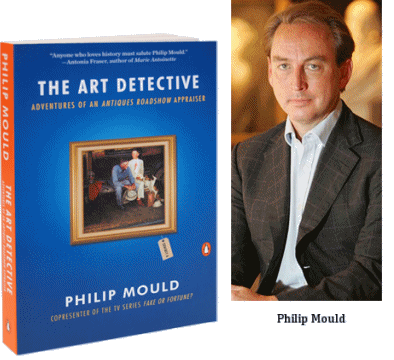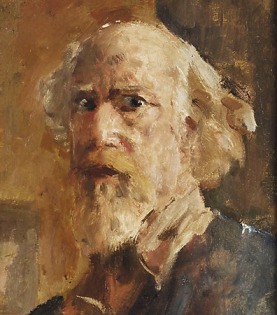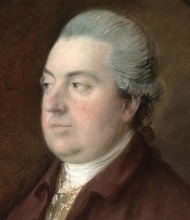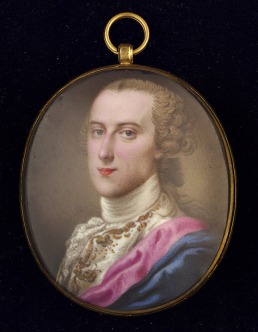Painting
Portraits That Will Not
Scare Pets or Grandchildren
|
“There was one man, however,
who would not be assuaged. As an artist,
more specifically a portrait painter,
John Howard Sanden was a devotee of
Rockwell and, of all the museums he
had visited, the Norman Rockwell Museum
was his favorite. He loved its elegant
design but also its exclusive focus,
not least (I suspect) because his
own work, with its clean-shaven, traditional
subjects technically owes something
to Rockwell’s style for expressing
the myth of modern America. His sitters
appear to have a good feeling about
themselves, and, although they are
untesting as works of contemporary
art, he composes the sort of family
portraits that comfortably slip into
the middle-class interior in a way
that will never scare pets or grandchildren.
Rated by some as among the ten most
successful portraitists in America,
Sanden, with his two studios, in Connecticut
and New York City, and his smoothly
professional presentation skills,
had become a figure who could not
easily be overlooked.”
|
| "...family
portraits that comfortably slip into
the middle-class interior..." |
|
My portraits, like Rockwell's work,
express
"the myth of modern America."
|
|
The kind of portraits that Sanden
paints
"will never scare pets or grandchildren."
|
|
|


Augustus John
Self-Portrait |

John Howard
Sanden
William B. Harrison, Jr., CEO, J.P. Morgan
Chase (detail) |

Thomas Gainsborough
(1727-1788)
Portrait of Francis Bennett |

John Howard
Sanden
Portrait of Dr. Donald Ferguson |

Pablo Picasso
(1881-1973)
Self Portrait |

James MacPherson
Portrait of a Nobleman, 1758 |
|